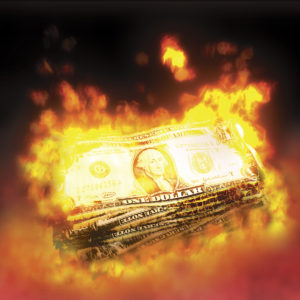The fires have been extinguished for months in California, but their scars are longer lasting. As residents rebuild homes and businesses, the recurring question has been one of cost–and of who pays. PG&E, the state’s primary utility company knows that it is likely to face a daunting bill after a CalFire investigation released its official report on the causes of the blazes, finding that the company bore partial responsibility. With fire costs in the billions of dollars, the company is concerned that paying its liability might force it into bankruptcy. Different proposals are being floated to ameliorate the utility’s burden.
Gov. Jerry Brown (D) has proposed changes to how the state handles fire liability. Under the terms of the reform, courts would be directed to consider if the company had been negligent or had properly followed regulations. His proposal would ask courts to “balance the public benefit of the electrical infrastructure with the harm caused to private property” by considering other factors which may have contributed to fires. It would also double the penalties for companies found to be in violation of safety rules.
This would be a change from current state law, which, under the “inverse condemnation doctrine,” places full liability for wildfires on utilities even when they were not negligent. It also would allow the company to recover the costs of hiring an independent assessor to gauge their fire preparedness and overall safety culture.
“The increasingly destructive and costly wildfires and natural disasters have the potential to undermine this system, leaving our energy sector in a state of weakness at a time when it should be making even greater investments in safety,” Brown wrote in a letter to lawmakers.
In early June, PG&E warned the Securities and Exchange Commission that it expected to record “a significant liability for losses” related to the fires. Earlier this year, PG&E hinted that the liability costs of the fire might push the company into bankruptcy. The company previously declared bankruptcy in 2001 during the 2000-2001 electricity crisis. Now it has told lawmakers that it may be forced to do so again.
“California is one of the only states in the country where the courts have applied inverse condemnation liability to events associated with investor-owned utility equipment,” the utility said in a statement after the CalFire report. “This means PG&E could be liable for property damages and attorneys’ fees even if we followed established inspection and safety rules.”
The governor’s proposal might help the utility going forward, but would not apply retroactively. Another bill, suggested by Assemblyman Bill Quirk, would though. Quirk proposed legislation that would allow the company to pass on the costs of settling the lawsuits to ratepayers, provided the company was not found negligent.
Critics have accused Brown of bailing out the utility company, though the governor placed limits on which costs the utility would be allowed to pass on to ratepayers.
A legislative conference committee is scheduled to meet next week to consider the various proposals.
According to state officials, the October 2017 fires involved more than 170 individual blazes and damaged over 245,000 acres in Northern California. Cal Fire’s investigation found that PG&E’s power lines started four fires last year, burning more than 14 square miles of land. Two of the fires, started in Butte and Nevada counties, were caused by trees that came into contact with power lines. Three smaller fires were caused after the utility failed to keep vegetation properly trimmed away from power lines.

